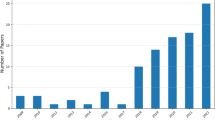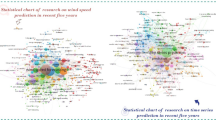Abstract
The automotive engine idle speed control problem is a compromise among low engine speed for fuel saving, minimum emissions and disturbance rejection ability to prevent engine stall. However, idle speed regulation is very challenging due to the presence of high nonlinearity and aging-caused uncertainties in the engine dynamics. Therefore, the engine idle speed system is a typical uncertain nonlinear system. To address the problems of inherent nonlinearity and uncertainties in idle speed regulation, an extreme learning machine (ELM)-based adaptive neural control algorithm is proposed for tracking the target idle speed adaptively. The purpose of ELM is to rapidly deal with the uncertain nonlinear engine system. Since the original ELM is not designed for adaptive control, a new adaptation law is designed to update the weights of ELM in the sense of Lyapunov stability. Experiment is conducted to validate the performance of the proposed control method. Experimental result indicates that the ELM-based adaptive neural control outperforms the classical proportional–integral–derivative (PID), fuzzy-PID and back-propagation-neural-network-based controllers in terms of tracking performance under the variation of engine load.












Similar content being viewed by others
References
Balluchi A, Zoncu M (2004) A nonlinear hybrid model of a 4-cylinder engine for idle speed control. In: Test case for the computation and control European project
Howell MN, Best MC (2000) On-line PID tuning for engine idle-speed control using continuous action reinforcement learning automata. Control Eng Pract 8(2):147–154. https://doi.org/10.1016/S0967-0661(99)00141-0
Zhang J, Gao J, Shen T (2016) Adaptive idling control scheme and its experimental validation for gasoline engines. Sci China Inf Sci 60(2):022203. https://doi.org/10.1007/s11432-016-0296-3
Banarezaei S, Shalchian M (2018) Design of a model-based fuzzy-PID controller with self-tuning scaling factor for idle speed control of automotive engine. Iran J Sci Technol Trans Electr Eng. https://doi.org/10.1007/s40998-018-0095-z
Mu H, Li X, Tang J (2017) Study with fuzzy self-turning PID controller on idle speed controlling of automobile. Paper presented at the 2017 Chinese Automation Congress (CAC), 20–22 Oct 2017
Yildiz Y, Annaswamy AM, Yanakiev D, Kolmanovsky I (2011) Spark-ignition-engine idle speed control: an adaptive control approach. IEEE Trans Control Syst Technol 19(5):990–1002. https://doi.org/10.1109/TCST.2010.2078818
Li S, Chen H, Yu S (2009) Nonlinear model predictive control for idle speed control of SI engine. Paper presented at the 48 h IEEE conference on decision and control (CDC) held jointly with 2009 28th Chinese Control Conference, 15–18 Dec 2009
Xu F, Chen H, Gong X, Mei Q (2016) Fast nonlinear model predictive control on FPGA using particle swarm optimization. IEEE Trans Ind Electron 63(1):310–321. https://doi.org/10.1109/TIE.2015.2464171
Wong PK, Tam LM, Li K, Vong CM (2009) Engine idle-speed system modelling and control optimization using artificial intelligence. Proc Inst Mech Eng Part D: J Automob Eng 224(1):55–72. https://doi.org/10.1243/09544070JAUTO1196
Vachtsevanos GJ, Farinwata SS, Pirovolou DK (1993) Fuzzy logic control of an automotive engine. IEEE Control Syst 13(3):62–68. https://doi.org/10.1109/37.214946
Puskorius GV, Feldkamp LA, Davis LI (1996) Dynamic neural network methods applied to on-vehicle idle speed control. Proc IEEE 84(10):1407–1420. https://doi.org/10.1109/5.537107
Czarnigowski J (2010) A neural network model-based observer for idle speed control of ignition in SI engine. Eng Appl Artif Intell 23(1):1–7. https://doi.org/10.1016/j.engappai.2009.09.008
Lu M, Loh RNK (2002) Modeling, design and implementation of discrete sliding mode control for an engine idle speed control system. Paper presented at the 2002 American Control Conference (IEEE Cat. No. CH37301), 8–10 May 2002
Barić M, Petrović I, Perić N (2005) Neural network-based sliding mode control of electronic throttle. Eng Appl Artif Intell 18(8):951–961. https://doi.org/10.1016/j.engappai.2005.03.008
Rong HJ, Zhao GS (2013) Direct adaptive neural control of nonlinear systems with extreme learning machine. Neural Comput Appl 22(3):577–586. https://doi.org/10.1007/s00521-011-0805-1
Huang GB, Zhu QY, Siew CK (2006) Extreme learning machine: theory and applications. Neurocomputing 70(1):489–501. https://doi.org/10.1016/j.neucom.2005.12.126
Liu X, Chen B, Zhao H, Qin J, Cao J (2017) Maximum correntropy Kalman filter with state constraints. IEEE Access 5:25846–25853. https://doi.org/10.1109/ACCESS.2017.2769965
Cao J, Wang W, Wang J, Wang R (2017) Excavation equipment recognition based on novel acoustic statistical features. IEEE Trans Cybern 47(12):4392–4404. https://doi.org/10.1109/TCYB.2016.2609999
Yang C, Huang K, Cheng H, Li Y, Su C (2017) Haptic identification by ELM-controlled uncertain manipulator. IEEE Trans Syst Man Cybern: Syst 47(8):2398–2409. https://doi.org/10.1109/TSMC.2017.2676022
Li GY (2007) Application of intelligent control and MATLAB to electronically controlled engine. Publishing House of Electronics Industry, China
Acknowledgements
This research is supported by the research grants of the University of Macau under grant numbers MYRG2016-00212-FST, MYRG2017-00135-FST and MYRG2019-00028-FST. The authors would like to thank Dr. Ka In Wong, Mr. Xiaoli Zhang and Mr. Tianyi Zhang for their assistance.
Author information
Authors and Affiliations
Corresponding author
Ethics declarations
Conflict of interest
The authors declare that they have no conflict of interest.
Additional information
Publisher's Note
Springer Nature remains neutral with regard to jurisdictional claims in published maps and institutional affiliations.
Rights and permissions
About this article
Cite this article
Wong, P.K., Huang, W., Vong, C.M. et al. Adaptive neural tracking control for automotive engine idle speed regulation using extreme learning machine. Neural Comput & Applic 32, 14399–14409 (2020). https://doi.org/10.1007/s00521-019-04482-5
Received:
Accepted:
Published:
Issue Date:
DOI: https://doi.org/10.1007/s00521-019-04482-5




